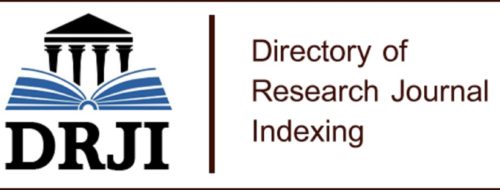Araştırma Makalesi
Yıl 2021,
, 667 - 685, 25.12.2021
Öz
Geopolitical risks are a serious concern today as they were in the past. Stationarity tests in the literature are generally used in tests such as hysteria, sustainability, purchasing power parity, convergence hypothesis. In this study, it is investigated whether the geopolitical risk index is stationary or not. An inference will be made about whether the uncertainty created by the events that
disrupts the normal and peaceful functioning of international relations is sustainable. For this purpose 1985-2019 year include geopolitical risk groups in that thought and data availability, taking into account a country group composed of 13 countries (Turkey, South Korea, Russia, India, China, Indonesia, Saudi Arabia, Thailand, Ukraine, Israel, Malaysia, the Philippines and Hong Kong). Index values, which are considered and calculated as indicators of the geopolitical risk index of the countries, were used. In this study, the stability of the geopolitical risk index was tested with the panel
unit root test. This test is the Fourier test with refraction, which was introduced to the literature by Li, Ranjbar, and Chang (2015), and takes into account soft and sharp structural breaks in the data
structure. As a result of the stationarity test, it is concluded that the geopolitical risk index series is stable. Thus, it has been concluded that the impact of the shocks on the geopolitical risk index for countries is not permanent but temporary. Apart from India and Indonesia, no other countries have geopolitical risk breaks.
Anahtar Kelimeler
Kaynakça
- Abadie, A. ve Gardeazabal, J. (2003). The economic costs of conflict: a case study of the Basque Country. American Economic Review, 93(1), 113–132.
- Agnew, J. (2003). Geopolitics re-visioning world politics. London: Routlege.
- Agnew, J. (2009). Making the strange familiar: geograpfical analogy in global geopolitics. Geographical Review, 99(3), 426-443.
- Balcilar, M., Cerci, G., ve Demirer R. (2016). Is there a role for Islamic bonds in global diversification strategies?. Managerial Finance, 42(7), 656–679.
- Becker, R., Enders, W., ve Lee, J. (2004). A general test for time dependence in parameters. Journal of Applied Econometrics, 19, 899–906.
- Becker, R., Enders, W., ve Lee, J. (2006). A stationary test in the presence of an unknown number of smooth breaks. Journal of Time Series Analysis, 27(3), 381–409.
- Bilgin, M. H., Gozgor, G. ve Demir, E. (2018). The determinants of Turkey’s exports to Islamic countries: The impacts of political risks. The Journal of International Trade & Economic Development, 27(5), 486-503.
- Caldara, D. ve Iacoviello, M. (2018). Measuring geopolitical risk. International Finance Discussion Papers 1222, https://doi.org/10.17016/IFDP.2018.1222.
- Carrion-i-Silvestre, J. L., Barrio‐Castro, D., ve López‐Bazo, E. (2005). Breaking the panels: an application to the GDP per capita. The Econometrics Journal, 8(2), 159-175.
- Dissanayake, R., Mehrota, V. ve Wu, Y. (2018). Geopolitical risk and corporate investment. Available at SSRN: https://ssrn.com/abstract=3222198 or http://dx.doi.org/10.2139/ssrn.3222198.
- Fania, N., Yan, C., Kuyon, J., ve Djeri, S. (2020). Geopolitical risk (GPRs) and foreign direct investments: a business risk approach. Global Journal of Management and Business Research, 20(1), 1-9.
- Gray, C. S. (2003). Coğrafya ve strateji: uygulamada jeopolitik. Colin S. Gray ve Geoffrey Sloan (Ed.). Tuğrul Karabacak (Çev.) Jeopolitik, Strateji ve Coğrafya içinde (s. 215-237). Ankara: ASAM Yayınları.
- Guttentag, J.M. ve Herring, R. J. (1986). Disaster myopia in international banking. International Finance Section, Department of Economics, Princeton University, Princeton, J. Reprints Antitrust L. & Econ. 27, New Jersey.
- Hadri, K. (2000). Testing for stationarity in heterogeneous panel data. The Econometrics Journal, 3(2), 148-161.
- Hoque, M. E. ve Zaidi, M. A. S. (2020). Global and country-specific geopolitical risk uncertainty and stock return of fragile emerging economies. Borsa İstanbul Review, 20(3), 197-213.
- Kahn, M. ve Akbar, M. (2013). The impact of political risk on foreign direct investment. International Journal of Economic and Finance, 5(8), 147-156.
- Karolyi, G. A. ve Martell, R. (2010). Terrorism and the stock market. International Review of Applied Financial Issues and Economics, 2(2), 285–314.
- Kollias, C., Kyrtsou, C., ve Papadamou, S. (2013). The effects of terrorism and war on the oil price–stock index relationship. Energy Economics, 40, 743–752.
- Kwiatkowski, D., Phillips, P. C., Schmidt, P. ve Shin, Y. (1992). Testing the Null Hypothesis of Stationarity against the Alternative of a Unit Root: how sure are we that economic time series have a unit root?”. Journal of Econometrics, 54(1-3), 159-178.
- Lee, Chi-Chuan ve Lee, Chien-Chiang. (2020). Insurance activity, real output, and geopolitical risk: fresh evidence from BRICS. Economic Modelling, 92, 207-215.
- Li, J.P., Ranjbar, O. ve, Chang, T. (2015). Unemployment hysteresis in Pig’s Countries: a new test with both sharp and smooth breaks. The Singapore Economic Review, 60(4) 1-13.
- Lu, Z., Gozgor, G., Huang, M. ve, Lau, C. K. M. (2020). The impact of geopolitical risks on financial development: evidence from emerging markets. Journal of Competitiveness, 12(1), 93–107.
- Malmgren, P. (2015). Geopolitics for investor. CFA Institute Research Foundation. https://cfaatlanta.org /images/meeting /021016/geo.pdf Nitsch, V. ve Schumacher, D. (2004). Terorism and international trade: an empirical investigation. European Journal of Political Economy, 20(2), 423-433.
- Parker, G. (1998). Geopolitics: past, present and future. London: Pinter.
- Pesaran, M. H., Ullah, A. ve, Yamagata, T. (2008). A bias-adjusted lm test of error cross-section independence. Econometrics Journal, 11(1), 105-127.
- Plakandaras, V., Gogas, P. ve, Papadimitriou, T. (2019). The effects of geopolitical uncertainty in forecasting financial markests: a machine learning approach. Algorithms, 12(1:1).
- Sykulski, L. (2014). Geopolitical risk in the analysis of international relations. European Journal of Geopolitics, 2, 132-144.
- Tuathail, G. (2003).Eleştirel jeopolitiği anlamak: jeopolitik ve risk toplumu. Colin S. Gray ve Geoffrey Sloan (Ed.). Tuğrul Karabacak (Çev.) Jeopolitik, Strateji ve Coğrafya içinde (1-14). Ankara: ASAM Yayınları.
- Wade, K. (2019). Foresight-measuring the market impact of geopolitics Schroders. Erişim adresi: https://www.schroders. com/en/ sysglobalassets/digital/insights/2019/pdfs/2019_sept_measuring-the-market-impact-of-geopolitics_ kw_ il_cs1696.pdf
Yıl 2021,
, 667 - 685, 25.12.2021
Öz
Jeopolitik riskler geçmişte olduğu gibi günümüzde de ciddi bir endişe kaynağıdır. Literatürde durağanlık sınamaları genelde histeri, sürdürülebilirlik, satın alma gücü paritesi, yakınsama hipotezi gibi vb. sınamalarında kullanılmaktadır. Bu çalışmada ise jeopolitik risk endeksinin durağan olup olmadığı araştırılmaktadır. Uluslararası ilişkilerin normal ve barışçıl işleyişini bozan olayların yarattığı belirsizliğin sürdürülebilir olup olmadığı hakkında bir çıkarımda bulunulacaktır. Bu amaçla 1985-2019 yılları arasında jeopolitik olarak risk grubunda olduğu düşünülen ve veri mevcudiyeti dikkate alınarak 13 ülkeden oluşan bir ülke grubu (Türkiye, Güney Kore, Rusya, Hindistan, Çin, Endonezya, Sudi Arabistan, Tayland, Ukrayna, İsrail, Malezya, Filipinler ve Hong Kong) alınmıştır. Ülkelerin jeopolitik risk endeksinin göstergesi olarak kabul edilen ve hesaplanan endeks değerleri kullanılmıştır. Bu çalışmada jeopolitik risk endeksinin durağanlığı panel birim kök testi ile sınanmıştır. Bu test Li, Ranjbar ve Chang (2015) tarafından literatüre kazandırılan kırılmalı Fourier testi olup veri yapısındaki yumuşak ve keskin yapısal kırılmaları birlikte dikkate almaktadır. Yapılan durağanlık sınaması neticesinde jeopolitik risk endeks serisinin durağan olduğu sonucuna ulaşılmıştır. Böylece ülkeler için jeopolitik risk endeksinde meydana gelen şokların etkisinin kalıcı olmadığı diğer ifadeyle geçici olduğu sonucuna varılmıştır. Ayrıca Hindistan ve Endonezya hariç diğer ülkelerde jeopolitik risk kırılmaları tespit edilememiştir.
Anahtar Kelimeler
Kaynakça
- Abadie, A. ve Gardeazabal, J. (2003). The economic costs of conflict: a case study of the Basque Country. American Economic Review, 93(1), 113–132.
- Agnew, J. (2003). Geopolitics re-visioning world politics. London: Routlege.
- Agnew, J. (2009). Making the strange familiar: geograpfical analogy in global geopolitics. Geographical Review, 99(3), 426-443.
- Balcilar, M., Cerci, G., ve Demirer R. (2016). Is there a role for Islamic bonds in global diversification strategies?. Managerial Finance, 42(7), 656–679.
- Becker, R., Enders, W., ve Lee, J. (2004). A general test for time dependence in parameters. Journal of Applied Econometrics, 19, 899–906.
- Becker, R., Enders, W., ve Lee, J. (2006). A stationary test in the presence of an unknown number of smooth breaks. Journal of Time Series Analysis, 27(3), 381–409.
- Bilgin, M. H., Gozgor, G. ve Demir, E. (2018). The determinants of Turkey’s exports to Islamic countries: The impacts of political risks. The Journal of International Trade & Economic Development, 27(5), 486-503.
- Caldara, D. ve Iacoviello, M. (2018). Measuring geopolitical risk. International Finance Discussion Papers 1222, https://doi.org/10.17016/IFDP.2018.1222.
- Carrion-i-Silvestre, J. L., Barrio‐Castro, D., ve López‐Bazo, E. (2005). Breaking the panels: an application to the GDP per capita. The Econometrics Journal, 8(2), 159-175.
- Dissanayake, R., Mehrota, V. ve Wu, Y. (2018). Geopolitical risk and corporate investment. Available at SSRN: https://ssrn.com/abstract=3222198 or http://dx.doi.org/10.2139/ssrn.3222198.
- Fania, N., Yan, C., Kuyon, J., ve Djeri, S. (2020). Geopolitical risk (GPRs) and foreign direct investments: a business risk approach. Global Journal of Management and Business Research, 20(1), 1-9.
- Gray, C. S. (2003). Coğrafya ve strateji: uygulamada jeopolitik. Colin S. Gray ve Geoffrey Sloan (Ed.). Tuğrul Karabacak (Çev.) Jeopolitik, Strateji ve Coğrafya içinde (s. 215-237). Ankara: ASAM Yayınları.
- Guttentag, J.M. ve Herring, R. J. (1986). Disaster myopia in international banking. International Finance Section, Department of Economics, Princeton University, Princeton, J. Reprints Antitrust L. & Econ. 27, New Jersey.
- Hadri, K. (2000). Testing for stationarity in heterogeneous panel data. The Econometrics Journal, 3(2), 148-161.
- Hoque, M. E. ve Zaidi, M. A. S. (2020). Global and country-specific geopolitical risk uncertainty and stock return of fragile emerging economies. Borsa İstanbul Review, 20(3), 197-213.
- Kahn, M. ve Akbar, M. (2013). The impact of political risk on foreign direct investment. International Journal of Economic and Finance, 5(8), 147-156.
- Karolyi, G. A. ve Martell, R. (2010). Terrorism and the stock market. International Review of Applied Financial Issues and Economics, 2(2), 285–314.
- Kollias, C., Kyrtsou, C., ve Papadamou, S. (2013). The effects of terrorism and war on the oil price–stock index relationship. Energy Economics, 40, 743–752.
- Kwiatkowski, D., Phillips, P. C., Schmidt, P. ve Shin, Y. (1992). Testing the Null Hypothesis of Stationarity against the Alternative of a Unit Root: how sure are we that economic time series have a unit root?”. Journal of Econometrics, 54(1-3), 159-178.
- Lee, Chi-Chuan ve Lee, Chien-Chiang. (2020). Insurance activity, real output, and geopolitical risk: fresh evidence from BRICS. Economic Modelling, 92, 207-215.
- Li, J.P., Ranjbar, O. ve, Chang, T. (2015). Unemployment hysteresis in Pig’s Countries: a new test with both sharp and smooth breaks. The Singapore Economic Review, 60(4) 1-13.
- Lu, Z., Gozgor, G., Huang, M. ve, Lau, C. K. M. (2020). The impact of geopolitical risks on financial development: evidence from emerging markets. Journal of Competitiveness, 12(1), 93–107.
- Malmgren, P. (2015). Geopolitics for investor. CFA Institute Research Foundation. https://cfaatlanta.org /images/meeting /021016/geo.pdf Nitsch, V. ve Schumacher, D. (2004). Terorism and international trade: an empirical investigation. European Journal of Political Economy, 20(2), 423-433.
- Parker, G. (1998). Geopolitics: past, present and future. London: Pinter.
- Pesaran, M. H., Ullah, A. ve, Yamagata, T. (2008). A bias-adjusted lm test of error cross-section independence. Econometrics Journal, 11(1), 105-127.
- Plakandaras, V., Gogas, P. ve, Papadimitriou, T. (2019). The effects of geopolitical uncertainty in forecasting financial markests: a machine learning approach. Algorithms, 12(1:1).
- Sykulski, L. (2014). Geopolitical risk in the analysis of international relations. European Journal of Geopolitics, 2, 132-144.
- Tuathail, G. (2003).Eleştirel jeopolitiği anlamak: jeopolitik ve risk toplumu. Colin S. Gray ve Geoffrey Sloan (Ed.). Tuğrul Karabacak (Çev.) Jeopolitik, Strateji ve Coğrafya içinde (1-14). Ankara: ASAM Yayınları.
- Wade, K. (2019). Foresight-measuring the market impact of geopolitics Schroders. Erişim adresi: https://www.schroders. com/en/ sysglobalassets/digital/insights/2019/pdfs/2019_sept_measuring-the-market-impact-of-geopolitics_ kw_ il_cs1696.pdf
Toplam 29 adet kaynakça vardır.
Ayrıntılar
| Birincil Dil | Türkçe |
|---|---|
| Bölüm | Makaleler |
| Yazarlar | |
| Yayımlanma Tarihi | 25 Aralık 2021 |
| Kabul Tarihi | 21 Ekim 2021 |
| Yayımlandığı Sayı | Yıl 2021 |













ERÜ İktisadi ve İdari Bilimler Fakültesi Dergisi 2021 | iibfdergi@erciyes.edu.tr
Bu eser Creative Commons Atıf-Gayri Ticari-Türetilemez 4.0 Uluslararası Lisansı ile lisanslanmıştır.


